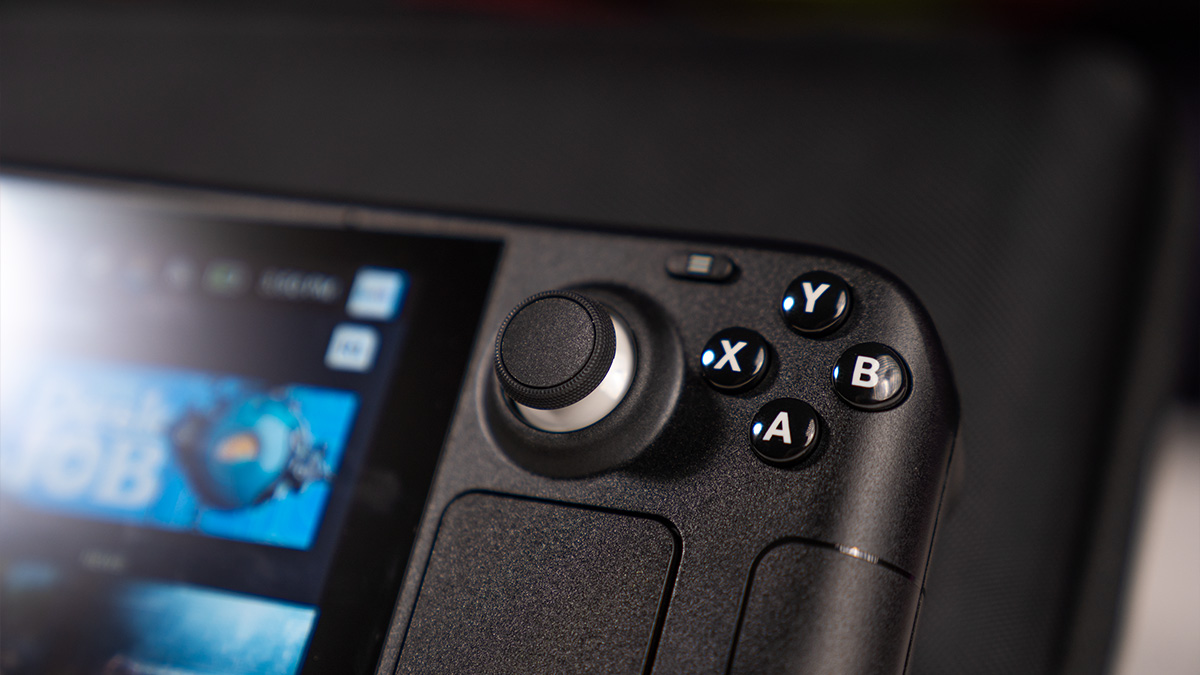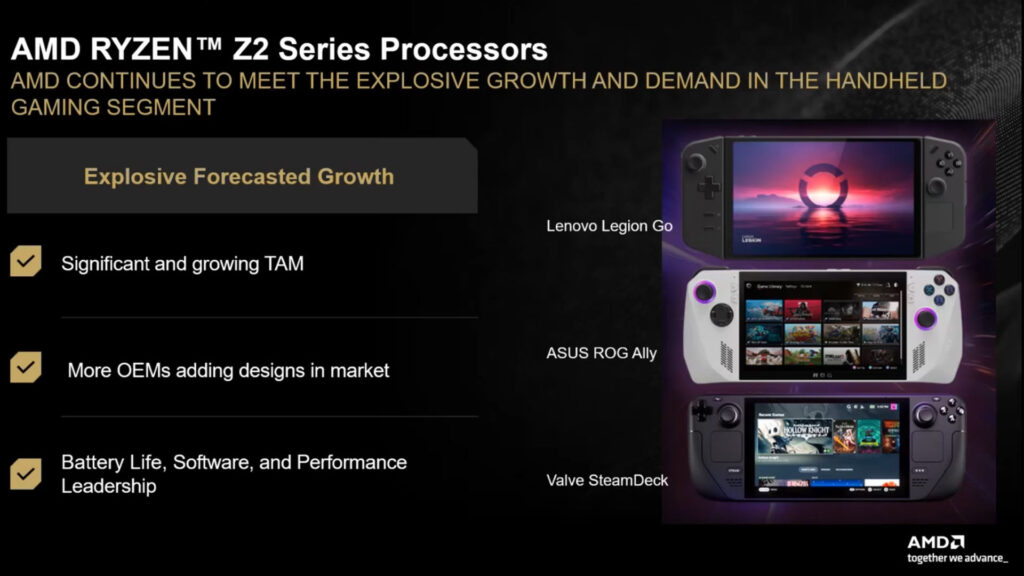Steam Deck 2 release date window speculation, specs rumors, and price prediction

Table of Contents
Both the general public and gaming media are chomping at the bit for any news about a potential Steam Deck 2 release date, what specifications this next-gen handset might have, and the likely pricing we should expect. The unfortunate reality however is that Valve hasn’t given us any concrete information at this stage, besides denials about what it will not be and some general thoughts as to their strategy for the new device.
At the very least, Valve is working on “future new hardware” and the prospect of a sequel to the Deck is ever-growing, albeit without any official confirmation from Valve yet. Using all the currently available evidence we’ve pieced together our predictions below, though all of these are very much subject to change as new information comes to light.
- Estimated release window: February – November, 2026
- Predicted price: $549 – $699
- What is it? The next instalment of the popular Valve gaming handhelds, following the original Steam Deck in 2022 and the subsequent Steam Deck OLED in 2024.
- Features: Unknown
- Latest updates: Confirmation that there will not be a Steam Deck powered by a Ryzen Z2 Series APU.
The speculated Steam Deck 2 release date window
Back in November 2023, Valve designer Lawrence Yang told Bloomberg that he expected the ‘next-generation power upgrade’ they’d be looking for to justify bringing out the Steam Deck 2 would not be available for ‘at least two or three years’. Originally it seemed possible that we could see a Steam Deck 2 2025 release date, which was initially reinforced by AMD showing a slide that appeared to show a Steam Deck powered by their new Z2 Series processors (you can see this below). However, a coder who works for Valve on the Steam Deck, Pierre-Loup Griffais, said over on Bluesky that “there is and will be no Z2 Steam Deck“. It could be that Valve is working on their own custom variant of this APU which has a different name and will still release it this year, however, it seems to be a pretty direct rebuttal.
Although some outlets are still sticking to the earliest date in the Lawrence Yang estimate, saying this could still mean we might see a Steam Deck 2 released in November 2025, we consider this to be unlikely following the comments by Pierre-Loup Graffais. Additionally, the decision of the company to allow the Legion Go S handheld to run on SteamOS (the SteamOS version is arriving in May) suggests they’re not particularly concerned that it will pose competition to their own handset releases this year… probably because they aren’t doing any.
Based on the above, our prediction is that we won’t see a Steam Deck 2 released in 2025, but possibly sometime in 2026 after the big tech reveals of CES that year in January, potentially on some new Ryzen (or other mobile processor) tech that could bring this next-gen power upgrade the company is waiting for. February – November 2026 is our current Steam Deck 2 release window prediction, though this remains very speculative, and it could end up coming out even later.
The somewhat misleading AMD Z2 Series slide

Mr Griffais’ response

Steam Deck 2 specs predictions
Given their stated aim of delivering true next-generation power with the Steam Deck 2, we can expect a substantial uplift in processing and graphical processing power. This could come with the next iteration of Ryzen mobile processors, or it could be that Valve themselves are working on a customized APU, which would likely use a Ryzen chip as its basis. Beyond this though, there’s not a lot to go on.
Given the increasing demand for it in the recommended specs of the latest games, RAM may increase to 32GB from the current LPDDR5. Storage probably won’t increase too much, though there’s always a chance that the upper SSD threshold could be upped from 1TB to 2TB.
An improved battery will likely be a major priority for Valve, given this is a handheld device after all. The current Steam Deck OLED battery duration in real-world scenarios (not based on Valve’s marketing claims) varies very much depending upon the sort of game you’re playing, but typically lasts anywhere between 1-and-a-half to seven hours, and we expect they’ll be looking to increase this. The 50.08Wh battery in the OLED was an upgrade over the 40Wh one in the original Steam Deck with LCD screen, and brought a battery duration improvement of around 30-50%, so we’re hoping for a similar leap with the Steam Deck 2. Brands such as ASUS have already made massive leaps in the battery department, with the ROG Ally X doubling the battery of its predecessor, for example.
It seems likely that the Steam Deck 2 will have an OLED screen, as the contrast ratio, HDR brightness, and extremely fast response times, were all very highly praised aspects of the Steam Deck OLED. Upping the refresh rate to at least 120Hz to compete with the current ROG Ally X is also likely, though we don’t imagine Valve will see it as much of a priority to go one better – the subjective user experience for most people won’t be significantly improved by achieving the highest refresh rate, and gaming on the current Steam Deck OLED display just looks better than most competing models, despite being capped at 90Hz.
Screen size may increase slightly, though we imagine the company will only do so if it can maintain the same overall size of the console – portability remains key here. This is what they did when they increased the Steam Deck OLED’s screen size to 7.4″ from the 7″ in the LCD variant, whilst maintaining very similar dimensions and also reducing the weight somewhat. Screen resolution may increase from the native 1280×800 (essentially a 720p screen but upped to a 16:10 aspect ratio with more vertical head space), though personally, we wouldn’t consider this a priority – given the small size of the screen, this resolution is absolutely fine. Native VRR support is something we expect so see for the built-in display, though what form this will take remains to be seen. If it comes with an AMD APU then FreeSync seems the most likely.
Finally, WiFi 7 support seems a very likely and obvious upgrade, as does a Steam Deck mount like the one that has just come out for the present versions.
Steam Deck 2 price predictions
The original Steam Deck had a starting MSRP of $399 back in 2022, which was very affordable indeed, but as Gabe Newell himself said ‘painful’ to achieve. Since then we’ve also had a fair bit of inflation, and seen the Steam Deck OLED retail for a starting price of $549, with the 1TB variant costing $649 – considerably more money. The competing ASUS ROG Ally retailed for $599 (the same price as they new Lenovo Legion Go S Steam version) and the ROG Ally X for $799.
Taking all the above into account, we think the Steam Deck 2 price will be in the $549 – $699 window, varying depending on the SSD storage you equip it with. Valve clearly likes to try and offer a cheaper product than their competitors where possible, and it’s a business strategy that seems to be working well for them.
What we’d like to see in the Steam Deck 2
There are a fair few items on our Steam Deck 2 wish list. Top of the list is increasing the power of the APU as much as possible and upping the RAM to 32GB to allow us to play more games and play existing ones on higher graphical settings. Secondly, VRR support for the built-in display to reduce screen tearing, and thirdly, improved battery life.
Besides this, we’re fairly happy with the core specs as they are (resolution is fine as it is), the main additions we’d like are greater connectivity and compatibility upgrades: the ability to connect to an external GPU would be great as it would allow you to use the Deck the basis for a much more powerful ‘dockable’ PC as well as a mobile gaming platform; native Chromecast support or similar, to enable you and others to watch your gameplay on a TV; native Virtual Machine support; and finally more USB-C ports, and maybe even an ethernet port (though this one seems unlikely).
